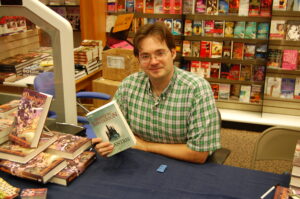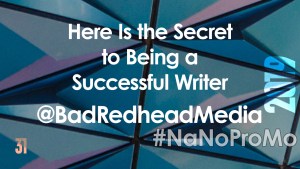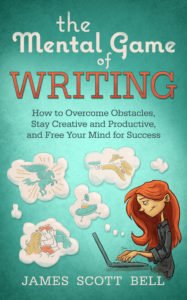 Have you ever written from the perspective of a character you hated?
Have you ever written from the perspective of a character you hated?
It’s a unique experience for me. Which is sayin’ something, considering I write psychological thrillers involving serial killers. With all my other serial killer characters, I could find at least one endearing quality, and I clung to that while I wrote from their perspective. I may not have agreed with their motivations, but at least I understood how they justifIed their actions.
Let me back up a minute.
I mentioned in one of my Reader Friday questions that I’ve been teaching a virtual course about serial killers as part of the Advanced Education Program for a school in Connecticut. I’m also racing toward the finish line in Book 5 of my Grafton County Series. I drew a firm line between the two projects until an Ah-ha! moment slapped me across the face. I was working on the lesson plan for Week 3 of my course when a deliciously evil idea popped into my head.
Don’t you love when that happens?
Even though the finish line was within reach, I couldn’t ignore the new idea. It’s a game-changer, and the perfect way to round out the series as a whole. It also required me to go back to page one, drop a few new clues, and include POV chapters from the killer.
Writing from a serial killer’s point of view isn’t anything new for me. In my Mayhem Series, readers expect a cat-and-mouse chase with alternating POVs between protagonist and antagonist. The Grafton County Series is different. I don’t normally include scenes/chapters from the killer’s POV.
To write a character in deep POV we need to know everything about them or slipping into their skin would be challenging to say the least. And here’s where my two projects—fiction and nonfiction—blurred together.
Out of all the serial killers we’ve discussed during class the most frightening of all was a nasty individual named Israel Keyes, whose MO happened to fit my plot. As part of my research for class, I sat through endless video confessions from Keyes, and learned a lot about who he was as a person and what motivated him to kill. Subconsciously, I must have had in mind all along and only now realized it. After all, if I fear him, so will my readers.
To write from his point of view, I had to view the world as he did. Think as he did. Feel—or more accurately, not feel—as he did. This was problematic for one huge reason—I despised everything about him. He’s evil to the core and didn’t possess even one redeeming quality.
Now, you could say, but Sue, this is fiction. You can add anything you want to his characterization. True, but then he wouldn’t be as frightening.
See what I’m sayin’?
The part of him that most frightened me was his complete lack of empathy toward anyone or anything, his arrogance, his inflated self-worth, and the violent blitz attack of his home invasions. If I softened his psychopathic personality, I’d lose the qualities that made me choose him in the first place. A softer villain wouldn’t pack the same punch. And let’s face it, after going head-to-head with numerous other serial killers in Books 1-4, my protagonist is no shrinking violent. She needs a frightening opponent.
Basing an antagonist on a real serial killer is hardly a new concept.
In the 1960s, Thomas Harris was visiting the Topo Chico Penitentiary in Nuevo Leon, Mexico while working on a story for Argosy, an American pulp fiction magazine that ran for 96 years, between 1882 and 1978. The 23-year-old Harris was interviewing prisoner Dykes Askew Simmons, who was committed to the prison’s psych. ward and sentenced to death for a triple murder. Simmons bribed a guard to help him escape. The guard took the money but had second thoughts during the prison break and shot Simmons.
As Simmons lay on the ground, bleeding out, another inmate, Dr. Alfredo Balli Trevino, treated the gunshot wound, saving his life.
This led Harris to develop an interest in Trevino. He interviewed the doctor and learned Trevino was convicted for the murder of his boyfriend, Jesus Castillo Rangel, in a “crime of passion” after an argument.
Apparently, Rangel had attacked Trevino with a screwdriver. The enraged doctor administered anesthetic to Rangel’s body and dragged him to a bathtub, where he slit his throat, draining all the blood out of his body. Trevino then chopped up Rangel’s body into small pieces and packed them into a box, drove to a relative’s farm, and asked if he could bury medical waste there. One of the farm workers called the police.
Thomas Harris said the doctor “had a certain elegance about him,” even as he discussed dismembering his boyfriend in a bathtub.
I found no such qualities in Israel Keyes.
How do we write from a hateful, despicable point of view?
Much like an actor who plays a villain, we must become one with the character. We have to identify with him. Win his arguments, even if those twisted views rub against our values. I despise this antagonist as much as I do Israel Keyes. Doesn’t matter. Our job is to breathe life into him, bring him to life on the page. The only time we can express our own personal feelings is through the protagonist if, and only if, the protagonist shares our views.
I find it easier to skip over a hateful character’s chapters while drafting the storyline. Then I take a day or two, get into character, and bang out his chapters. The next day when I reread those chapters I’m stunned by his actions and comments. That’s a good thing. If it shocks me (the writer), imagine readers’ reactions.
In my case, though the real killer can’t hurt anyone else—he committed suicide like a coward—it’s left me with one burning question: How many other Israel Keyes walk among us? I’d tell you, but I don’t want to shatter your reality. 🙂
Have you ever written a hateful, angry POV character? Did you handle it in a similar way?


 Today is National Day of Unplugging, from sundown tonight to sundown tomorrow night, a time to unplug from technology, electronics, and social media. So, are you going to unplug? Could you do it? Would you write? And how (charcoal on the wall of a cave, mitten in the snow, quill pen, pencil, fountain pen, ball point, Sharpie)?
Today is National Day of Unplugging, from sundown tonight to sundown tomorrow night, a time to unplug from technology, electronics, and social media. So, are you going to unplug? Could you do it? Would you write? And how (charcoal on the wall of a cave, mitten in the snow, quill pen, pencil, fountain pen, ball point, Sharpie)?

 It feels like this: it’s a big mountain, full of mud. It’s raining. Hard. I’m carrying this heavy weight. But I’ve got this! It’s just that some days it’s just…so exhausting. Or I have a migraine. Or I’m running my kids around (single mom). Or I’ve got client deadlines (solopreneur).
It feels like this: it’s a big mountain, full of mud. It’s raining. Hard. I’m carrying this heavy weight. But I’ve got this! It’s just that some days it’s just…so exhausting. Or I have a migraine. Or I’m running my kids around (single mom). Or I’ve got client deadlines (solopreneur). As a survivor of
As a survivor of  Rachel Thompson released the
Rachel Thompson released the 



 Recently I had an enlightening conversation with a chiropractor, Dr. Erika Putnam, shown here consulting with her office manager, Hartty.
Recently I had an enlightening conversation with a chiropractor, Dr. Erika Putnam, shown here consulting with her office manager, Hartty.









 I hope you’re not munching a donut or toast right at the moment.
I hope you’re not munching a donut or toast right at the moment.
 Indexing our Fiction
Indexing our Fiction